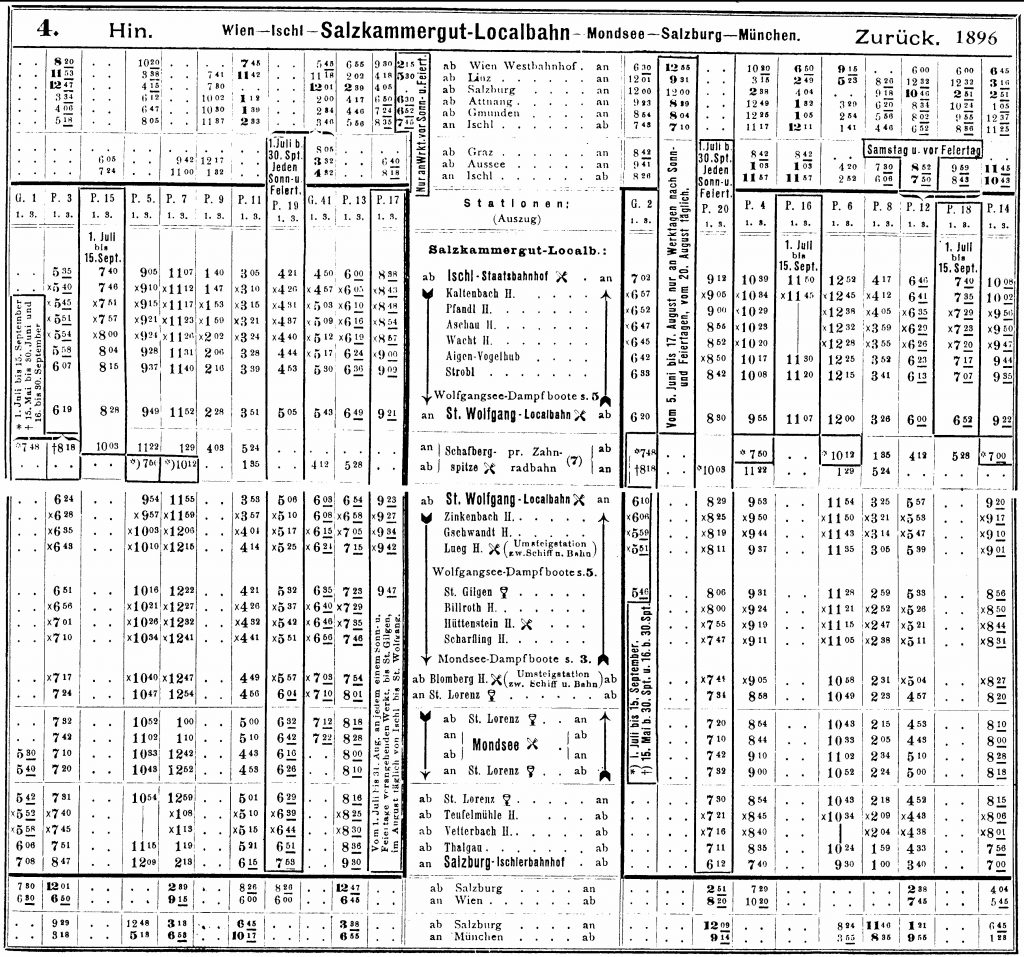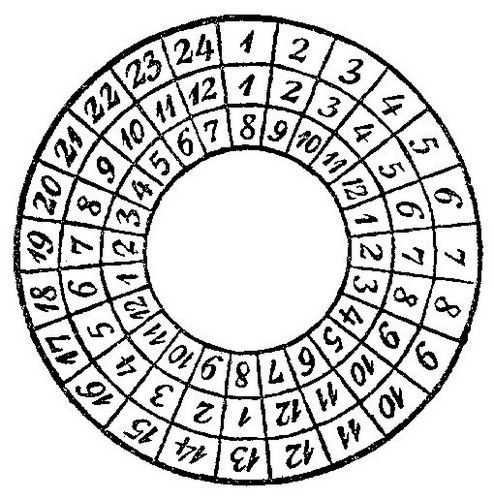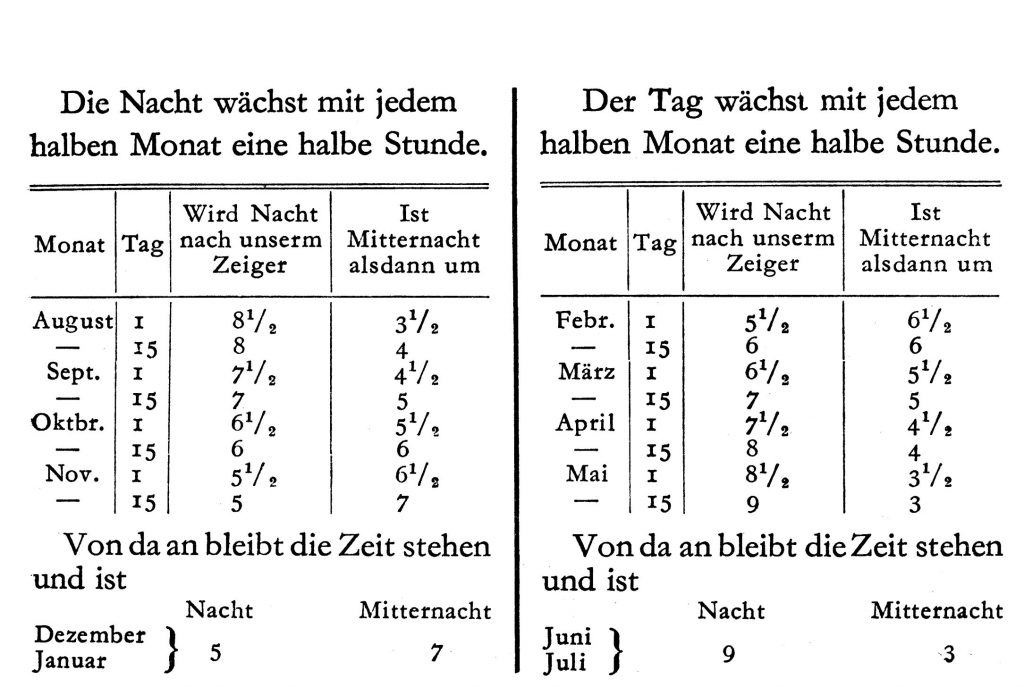Time in Germany: How Did We Get Here? Posted by Sten on May 21, 2020 in Culture, Language
We’ve written many posts on how to tell time in German. However, we’ve never discussed how we got there! How is it that in the United States, you say 4 pm, and in Germany, you’d say sechzehn Uhr (sixteen hours)? Why is this referred to as military time in the US and just… time in German? It wasn’t always like that. Here’s a brief look at how Germans got to their time-telling.
The Year Is 1927…
It’s May 15, midnight. The clock is at the 12, slowly ticking away, like nothing’s changed. But something is different. It is no longer, as it’s been for Jahrhunderte (centuries), zwölf Uhr, but null Uhr. Germany adopted the 24-hour time on that day, almost 100 years ago. While this had little implications for how people told time (many expressions with telling time still use the 12-hour system, you’d still say halb vier for 15:30 instead of halb sechzehn), it did add another dimension and clarity.
Imagine you bought a train ticket in January, 1927. Back then, the Deutsche Reichsbahn (German State Railway) would unterstreichen (underline) the minutes of the Nachtstunden (night hours), so from 6 pm to 5:59 am, to avoid confusion. So a train scheduled for 735 would leave at 7:35 in the morning. If the 35 was underlined, it would leave at 7:35 in the evening. The time could also have an addition, like morgens, vormittags, nachmittags (in the morning, midmorning, afternoon) or abends (in the evening). Confusing, right?
After May 15, 1927, your morning ticket would say 7:35, while your evening ticket would say 19:35. Easy, impossible to misinterpret! Nice!
However, these were all rather small changes. Decades before, you still had to change your clocks within Germany, since every place had their own time! Each town had the clocks on their church towers set according to the sun. If you traveled east or west, you could change your clock by one minute every 18 kilometers (11 miles).
This wasn’t a big deal before the railroad, because many people never left their hometown. But when traveling became easier and faster, these different times made life extremely confusing.
And so, 127 years ago, on April 1, 1893 (no joke, really!), the German Empire joined the mitteleuropäische Zeitzone (Central European Time zone). This was pretty late, since in 1884, 25 countries agreed to Greenwich Standard Time. The German Empire didn’t like that the time started in Greenwich, not in Berlin, and so they refused to join. Until 1893, when it became clear that different times would be problematic for soldiers trying to catch their trains.
Before 1893, German trains followed Berlin time, but Bahnhöfe (train stations) would also have clocks with times in other places. So telling time used to be a lot more confusing!
It goes all the way back to Goethe
For a long time, the day was divided up into 6 hours, the so called hellen Stunden (bright hours). These hours, however, weren’t all the same length, especially not between regions, since hours meant different things in different places. The dunklen Stunden (dark hours) weren’t measured at all – it was the time that you’d sleep, anyway, so why would you need that?
At the time of Goethe’s trip to Italy, around 1776, he noticed the differences in telling time. In the circle above, the innermost circle shows the German time, while the second circle shows the Italian time. The outermost circle shows the 24-hour time, which was known but not very common at the time. As you can see, Goethe had to do some calculations to figure out what the time in Germany would be! And no, these are not time zones – just that the day starts over at a different time of the day! In any case, Goethe found enjoyment in it:
“Wenn du das gelesen hast und meine Tafel ansiehst;
wird dir’s im Anfang schwindelig im Kopf werden, du wirst ausrufen: welche Unbequemlichkeit,
und doch am Orte ist man’s nicht allein bald gewohnt,
sondern man findet auch Spas daran wie das Volck,
dem das ewige hin und wieder rechnen und vergleichen zur Beschäfftigung dient.”(If you’ve read that and look at my table;
you’ll feel dizzy at first, you’ll say: what inconvenience,
yet here one not only gets used to it quickly,
but even enjoys how the people
are kept busy with the everlasting calculating and comparing back and forth.)
The way this works is that the day started by counting from Sonnenaufgang (sunrise). And since Sonnenaufgang shifts year-round, the clock shifts with it. This was common from the 14th all the way to the 18th Jahrhundert. Clocks were Sonnenuhren (sundials), and so hours weren’t exact. Only since Erfindung (invention) of mechanische Uhren (mechanical clocks), every hour was exactly 60 minutes long.
In scientific and astronomical circles, the 24 hour-clock was already in use. But it would take a long time for the general public to get used to this. Only at the beginning of the 20th Jahrhundert, countries officially adopted the 24-hour time. While many countries got there in the first two decennia, Germany followed rather late in 1927. The 24-hour time is the dominant system worldwide now, and has been standardized by ISO.
However, some countries, like the United States, stuck with the 2-times-12 system, and use a.m. and p.m. to differentiate between before noon and after noon. Though even there, certain places like the military have adopted the 24-hour system to avoid any confusion, known there as military time.

Build vocabulary, practice pronunciation, and more with Transparent Language Online. Available anytime, anywhere, on any device.







Comments:
Stuart King:
Hello Sten, I love your posts and always learn something new. Usually everything is very accurate but today you made a glaring error at the very start of the blog: 4pm is sechzehn Uhr, not vierzehn Uhr. I am sure many others have commented on this. An easy trap to fall into!!
Sten:
@Stuart King Whoops! Read over that too quickly. Thanks for picking up on it! Fixed it 🙂
Rodney Apfelbeck:
“How is it that in the United States, you say 4 pm, and in Germany, you’d say vierzehn Uhr (fourteen hours)?” – NO – sechzehn Uhr!
Joe Genovese:
Hi,
In your blog about time in Germany, you give “4pm” as “vierzehn Uhr”.
Is that correct ?
Sten:
@Joe Genovese No, I fixed it. Sorry for that!
Joe Genovese:
“so depending on whether you traveled east or west, you could change your clock by one minute every 18 kilometers (11 miles).”
I think it is better to leave out “so depending on”.
If you don’t, and leave everything as it is, then you must add, after “18 kilometres (11 miles) “, the following: ” backwards from east to west, forwards when travelling from west to east.”
Sten:
@Joe Genovese Good point. I removed the “so depending on”
Thanks!
Joe Genovese:
What an interesting article!
The US faced the same problem when travel by train became part of many people’s daily routine.
With some 3,000 miles separating the West Coast from the Eastern Seaboard, and numerous stations in between sticking to different individual standards of telling the time, enormous pressure was brought on these states by the railroads to clean up their act and adopt a universal system, that harmonized rail travel, making possible reliable timetables.